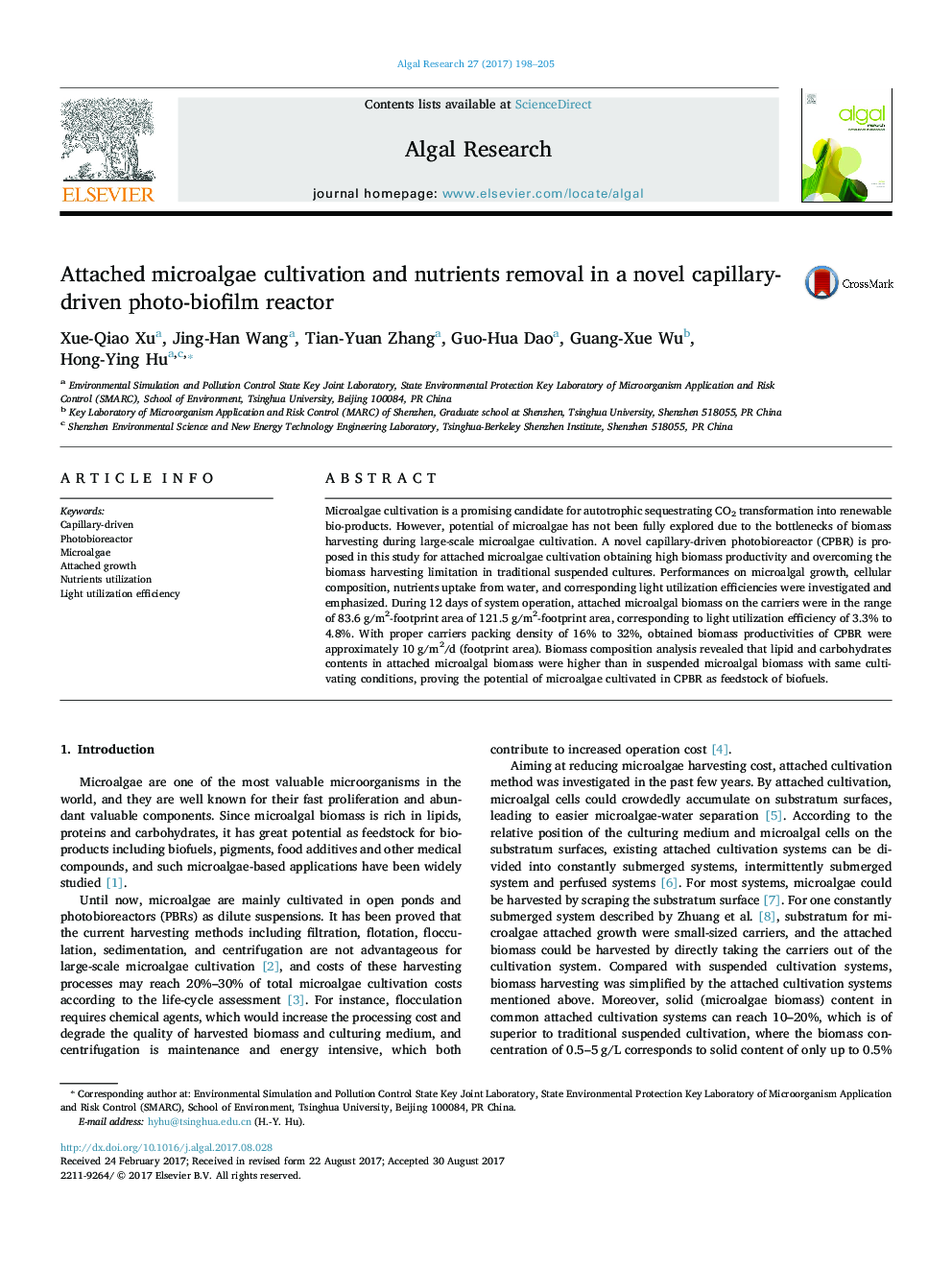| Article ID | Journal | Published Year | Pages | File Type |
|---|---|---|---|---|
| 5478537 | Algal Research | 2017 | 8 Pages |
Abstract
Microalgae cultivation is a promising candidate for autotrophic sequestrating CO2 transformation into renewable bio-products. However, potential of microalgae has not been fully explored due to the bottlenecks of biomass harvesting during large-scale microalgae cultivation. A novel capillary-driven photobioreactor (CPBR) is proposed in this study for attached microalgae cultivation obtaining high biomass productivity and overcoming the biomass harvesting limitation in traditional suspended cultures. Performances on microalgal growth, cellular composition, nutrients uptake from water, and corresponding light utilization efficiencies were investigated and emphasized. During 12Â days of system operation, attached microalgal biomass on the carriers were in the range of 83.6Â g/m2-footprint area of 121.5Â g/m2-footprint area, corresponding to light utilization efficiency of 3.3% to 4.8%. With proper carriers packing density of 16% to 32%, obtained biomass productivities of CPBR were approximately 10Â g/m2/d (footprint area). Biomass composition analysis revealed that lipid and carbohydrates contents in attached microalgal biomass were higher than in suspended microalgal biomass with same cultivating conditions, proving the potential of microalgae cultivated in CPBR as feedstock of biofuels.
Related Topics
Physical Sciences and Engineering
Energy
Renewable Energy, Sustainability and the Environment
Authors
Xue-Qiao Xu, Jing-Han Wang, Tian-Yuan Zhang, Guo-Hua Dao, Guang-Xue Wu, Hong-Ying Hu,
